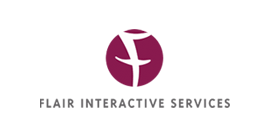When you finish typing an email message, don’t forget to sign it. In email language, that doesn't mean simply typing your name. The “signature block” contains a great deal of information.
An email is a blank screen. It contains none of the contact information which is found on traditional company letterhead or stationery. You need to provide this information in the form of a signature block.
Avoid the temptation to create a fancy banner with lots of symbols at the top of your email message. Most of that fancy stuff does not translate well from one email system to another. It also creates huge files, which means the message takes a rather long time to open. Locking up a client’s email is not the best way to make a positive impression on him/her.
The best position for the signature block is at the end of an email. When creating your block, try to keep it to four lines. In some cases, you may need more space but use caution or the contact information may end up being longer than the body of the message. To solve this, try putting multiple pieces of information on one line. For example: Marketing Director, ABC Meeting Planners.
In determining what to include - again think of your letterhead. Provide your full name, title, company name, phone number, and email address. You may also want to give your mailing address and fax number. If you have a website, list that address, too. Don’t miss an advertising opportunity.
Why include all this contact information? Maybe an important client wants to call you instead of replying via email. Don’t make it difficult for him/her to find you. Including your email address is not redundant. Messages get forwarded, edited, etc. The ultimate receiver may not have a clue who the original sender was.
If you work for a large company consider using a separate signature for internal messages, since your coworkers don’t need all of those details. You might provide your phone extension, in case there is not a company directory handy, and your department, if the receiver doesn’t know you.
To save you from having to re-type all this information with every new message, newer email programs allow you to create standard signature blocks. This feature is usually found under the “Options” or “Preferences” heading. It automatically inserts the block at the bottom of your new message. You can create numerous signatures and use them for different types of emails. If you use the same closing (Sincerely, Warmly, or Regards) for all correspondence, you can save even more time by including it in your signature block.
